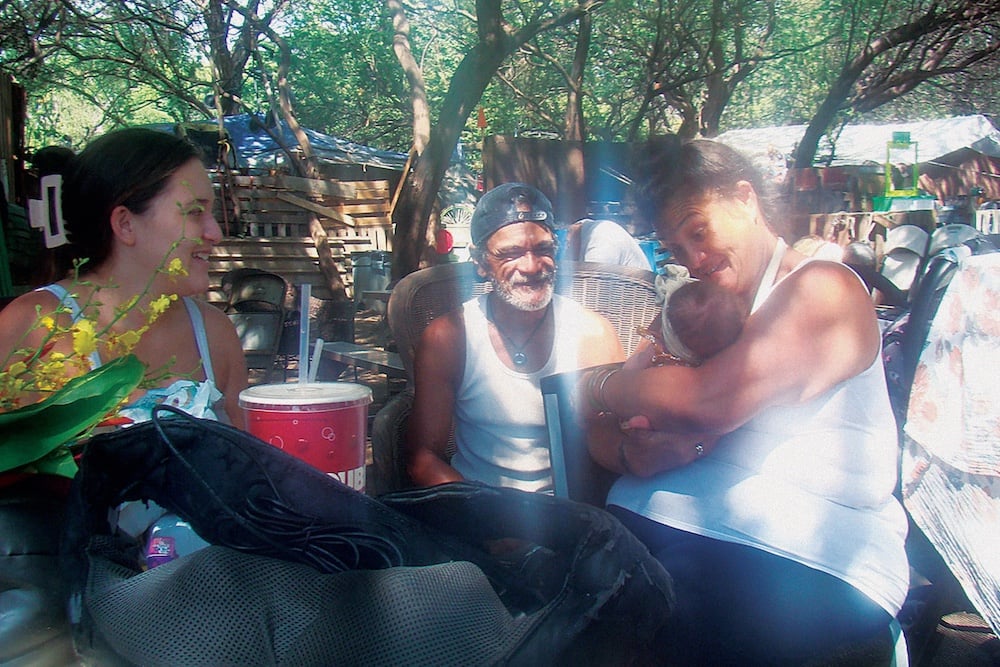What’s the ROI on Early Childhood Education

The return on investment is good but turns up in unexpected places
This legislative session, as lawmakers debate a bill that would make preschool universal among Hawaii children, you may hear some outrageous claims from the advocates of early childhood education:
For a boy growing up in a poor, crime-ridden neighborhood, just a year or two of preschool will reduce the chance he’ll ever be arrested for rape by more than 50 percent. He’ll be less than a third as likely to commit assault. And he’ll collect $23,000 less in welfare over the course of his lifetime. For a poor girl, a whiff of preschool will double the likelihood she’ll finish high school. Her total lifetime earnings will increase by 36 percent. And she has a 57 percent better chance of owning her own home by the time she’s 40.
These grand pronouncements are in addition to the more plausible claims, such as early childhood education improves kids’ cognitive skills and prepares them better to learn once they get to school. That’s a lot to attribute to just a few hours a week of preschool. In other words, we had our doubts.
So, we checked the research and were surprised by what we discovered. It turns out that, in most cases, the more plausible the claim, the less likely it’s true. Conversely, lots of seemingly outrageous pronouncements are documented with mountains of data.
Here’s a quick tour of the astonishing research on the effects of early childhood education.
Perry Preschool
In many ways, the prototype for this kind of research was the Perry Preschool Program. Perry provided intensive preschooling and monthly home visits for groups of 3- and 4-year-old at-risk kids in Ypsilanti, Mich., between 1962 and 1965. As part of the program, researchers repeatedly tested the children to measure the effectiveness of preschooling on their cognitive levels and academic achievement.
Two factors distinguish the Perry Preschool Program from previous research on early childhood education. It was the first study of its kind to employ randomization, a key feature of good social-science research. At the outset, Perry researchers selected a representative group of 123 children. They then randomly assigned the children either to a group that participated in the program or to a control group that did not. This randomization makes it possible for researchers to attribute differences in educational or life outcomes in the two groups to their preschool experience.
The other important feature of the Perry Preschool Program was that it was a longitudinal study. Researchers followed both the participants and the control group for many years to document the effects of the program over time. In fact, the most recent data is from extensive surveys taken as the Perry “children” turned 40. As a result of this flood of data, researchers created a nonprofit foundation, HighScope, to serve as a home for Perry research.
Abecedarian Project
The Abecedarian Project, conducted in Chapel Hill, N.C., in the 1970s, was also a randomized and longitudinal study, but was more intensive than Perry Preschool’s. Instead of starting with 3- or 4-year-olds, researchers selected a group of 111 infants, divided into a group of 57 who received the program’s high-quality “interventions” and a control group of 54. Moreover, the children in the Abecedarian Project received treatment six to eight hours a day for five years, compared to one and a half hours a day over one or two years for Perry children. The Abecedarian children, both participants and the control group, also received food, social services and free health care to make sure these weren’t contributors to the program’s outcomes. Finally, where the Perry curriculum was based on cognitive development, Abecedarian was a language-development program.
Chicago Child Parent Centers
The CPC program is less intensive than Perry Preschool and Abecedarian. Begun in the Chicago public-school system in 1965, just ahead of the Head Start program, it uses a child-teacher ratio of 8.5:1 compared to 5:1 for Perry and as low as 3:1 for Abecedarian. It does, however, also offer children occasional home visits, health screenings and free food. Perhaps most importantly, the program also includes a strong parent-participation component. What the program didn’t include was a randomized sample, which complicates comparisons with the other programs. On the other hand, because it was integrated into the public school system, it is by far the least expensive of the three programs, and is still in operation.
In addition to these three famous lines of research, there have been countless smaller or less rigorous early childhood education studies. Of most interest in Hawaii is probably the research on the federally funded Head Start, one of the largest preschool programs in the state. Finally, Perry Preschool, Abecedarian and CPC have generated reams of meta-research, mostly in the form of cost-benefit analyses of the different approaches. This information is probably the best lens through which to consider the rest of the data.
The Downside
The most surprising discovery of all this research into early childhood education is that it doesn’t seem to do a particularly good job at the basic task of improving the cognitive skills of children. That, after all, was the fundamental point of government-funded preschool. Yet, even though all three programs succeed in increasing IQ scores for participants, most of those improvements fade quickly. Perry’s 4-year-old participants, for example, saw their IQs spike to 95.5 (compared to the control group’s 83.3). By age 8, however, they had fallen to nearly equal to the control group at 88.1.
Early intervention also doesn’t seem to make them better students. Most of the studies show little long-term impact on math skills or vocabulary. These findings were more or less consistent across programs and are echoed in other research. A 2010 congressionally mandated study of the effectiveness of Head Start, for example, found: “There were no impacts for 4-year-olds in the cognitive domain at the end of kindergarten,” and “No significant impacts were found for math skills, pre-writing, children’s promotion, or teachers’ of children’s school accomplishments or abilities in any year.”
Abecedarian is somewhat of an exception. Unlike the other programs, participants in the Abecedarian Project seem to have some residual improvement in IQ, although not at a statistically meaningful level. More important, there were modest but persistent increases in reading and math achievement, even at age 21. The question is, are they significant enough to justify the program as a whole?
The Upside
On the other hand, there’s not much doubt that early childhood education correlates neatly with many of those signal life achievements that advocates like to tout. Program participants typically:
- Show significantly higher high-school graduation rates;
- Spend fewer months in special education;
- Repeat grades less often;
- Attend four-year colleges more often;
- Have higher lifetime earnings;
- Hold jobs longer; and
- Maybe most surprising of all, commit fewer crimes.
Astonishingly, the latest data from the Perry Preschool 40-year-olds seems to confirm that these results persist indefinitely, even though most of the participants attended the same dysfunctional schools and spent their entire lives in the same impoverished neighborhoods as the control group.
Fiscal Argument
Here’s the real kicker: Most of these life achievements have demonstrable economic value, either to the individual or to society. They’re also mutually enhancing. Every extra year of school, for example, can be correlated with additional income, lower levels of incarceration and less dependence on welfare. By linking the data in these early childhood education studies with other kinds of data, economists have been able to account for the costs and benefits of these kinds of programs. They are very clear.
Because the three studies generated slightly different data, their cost-benefit analyses look slightly different. Perry Preschool research has focused on reduced levels of arrest and incarceration. Consequently, the Perry data show huge social benefits through crime savings. Abecedarian parents seem to have taken advantage of the full-day, yearlong childcare program to work longer hours. Data for that program show higher parental earnings and healthcare benefits, both substantially increasing the personal-benefits side of the equation. CPC, being less intensive, shows fewer benefits across the board. Of course, since it was also the least expensive of the three programs, it incurs lower costs. In any case, the data from all three programs demonstrate that a dollar invested in early childhood education always yields a profit. Perry Preschool, because of the enormous crime savings in young men, gives a total benefit of $229,645 over the life of the participant. But even CPC shows a net benefit of $43,028. Because the program is so inexpensive to operate, it also yielded the highest return on each $1 investment: $10.15.
Naturally, many benefits of these programs stem from their high-quality, intensive approach to young childhood intervention. But even in lower-intensity programs, like Head Start, benefits have been shown to outstrip costs enough to justify the program.
This research isn’t without critics. Some researchers have questioned the validity of studies like Perry Preschool and Abecedarian because they have such small sample sizes. Some economists have also claimed that the demographics of the studies (both programs enrolled almost exclusively poor African-Americans) make it difficult to extrapolate the data to other populations. Statistically, these are valid complaints.
However, most of these concerns have been laid to rest by economist and Nobel laureate James J. Heckman of the University of Chicago. Heckman has used sophisticated statistical and economic techniques to normalize the data for both sample size and demographic bias. His conclusion: No form of social welfare pays better returns than investing in the education of disadvantaged youths. In fact, the famous Heckman Curve, which compares the rate of return of an investment in human capital to the age of the children in whom society invests, offers an appropriate motto for young childhood education advocates:
The younger the better.
Comparing the Big 3 Studies
Characteristics of the Perry, Abecedarian, and Chicago Child-Parent Centers preschool programs
| Perry Preschool | Abecedarian | Chicago Child-Parent Centers | |
|---|---|---|---|
| Program Characteristics | |||
| Location city and state | Ypsilanti, MI | Chapel Hill, NC | Chicago, IL |
| Program description | Preschool | Eductional childcare | Preschool |
| Curriculum | Cognitive development | Language development | Language development |
| Enrollment age | 3 to 4 years | 6 to 12 weeks | 3 years |
| Calendar | Academic year | 50 weeks per year | Academic year; 6 week summer program |
| Number of days per week | 5 | 5 | 5 |
| Length of day | 2.5 hours | 8 hours | 3 hours |
| Child-teacher ratio | 5:1 | 3:1 for infants to 6:1 for children age 5 | 8.5:1 |
| Teacher qualifications | Master’s degree; Child development training | Experience working with young children; In-service training | Bachelor’s degree; Certified in early childhood education |
| In-home visits | 1.5 hours per week | None listed | As part of outreach services |
| Parental involvement | Monthly meetings | None listed | Half-day per week |
| Health services | None listed | On-site pediatric care | Health screening; speech therapy; nursing services |
| Nutrition | None listed | Free breakfast, lunch, snack | Free and reduced price meals |
Source: Center for Business and Economic Research at the University of Kentucky; its report is called, “Costs and Benefits of Early Childhood Education.”
Cost-Benefit Analysis
Per child, in 2005 dollars
| Average total costs per student | Average total benefits | Net benefits (benefits-costs) | Benefit-cost ratio (benefits/costs) | Internal rate of return | |
|---|---|---|---|---|---|
| Perry Preschool | $17,198 | $293,579 | $276,381 | $17.07 to $1 | 18% |
| Carolina Abecedarian project | $38.934 | $147,149 | $108,215 | $3.78 to $1 | 7% |
| Chicago Child-Parent Center | $8,018 | $81,399 | $73,381 | $10.15 to $1 | 22% |
• Long term research has shown that all of the famous studies of Early Childhood Education produce strong returns.
Source: Center for Business and Economic Research at the University of Kentucky; its report is called, “Costs and Benefits of Early Childhood Education.”
Breakdown of the Costs and Benefits
All figures in 2007 dollars
| Perry Preschool | Abecedarian | Chicago Child-Parent Centers | |
|---|---|---|---|
| Private Benefits | |||
| Childcare | $1,091 | $2,108 | |
| Education Costs | -$193 | -$237 | |
| Participant Earnings | $60,743 | $45,190 | $26,098 |
| Earnings of Future Generations | $6,890 | ||
| Parental Earnings | $82,754 | ||
| Health Benefits | $21,410 | ||
| Welfare Benefits | -$2,414 | n/a | |
| Total Private Benefits | $59,227 | $156,243 | $27,970 |
| Public Benefits | |||
| Total K-12 Cost Savings | $10,155 | $10,639 | $6,197 |
| Higher Education Costs | -$1,362 | -$9,787 | -$472 |
| Total Crime Savings | $206,467 | ||
| Welfare Administrative Costs | $3,333 | $236 | |
| Child Abuse/Neglect Savings | $979 | ||
| Total Public Benefits | $218,593 | $1,088 | $23,568 |
| Total Program Costs | $18,261 | $43,183 | $8,512 |
Source: “The Dollars and Cents of Investing Early” by James Heckman
Returns on Each Dollar Invested
Returns to each dollar invested at different ages
Source: James J. Heckman, University of Chicago






